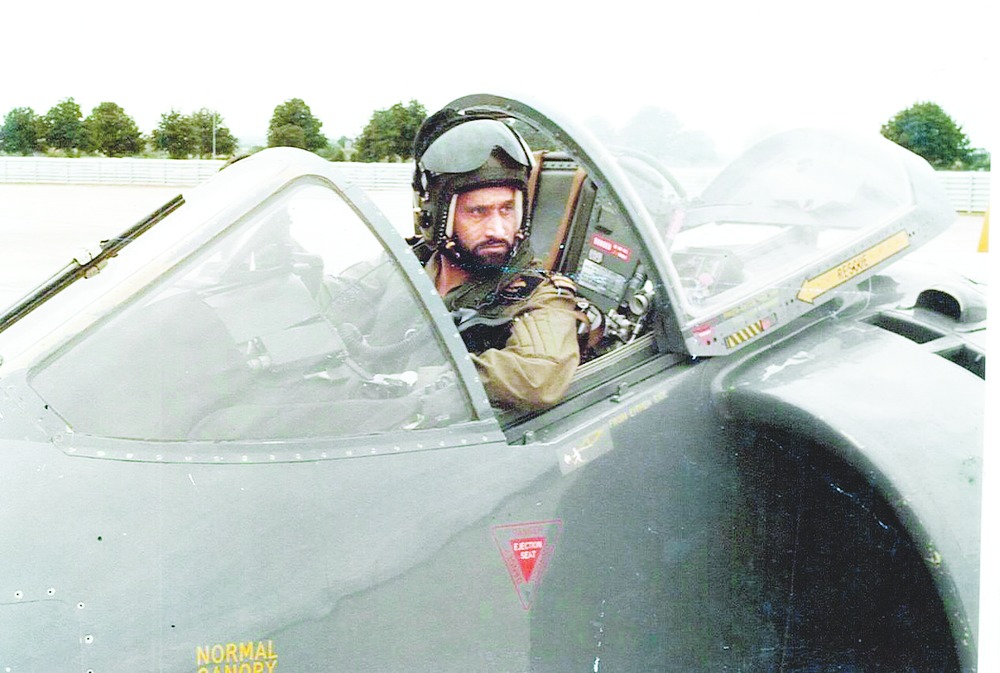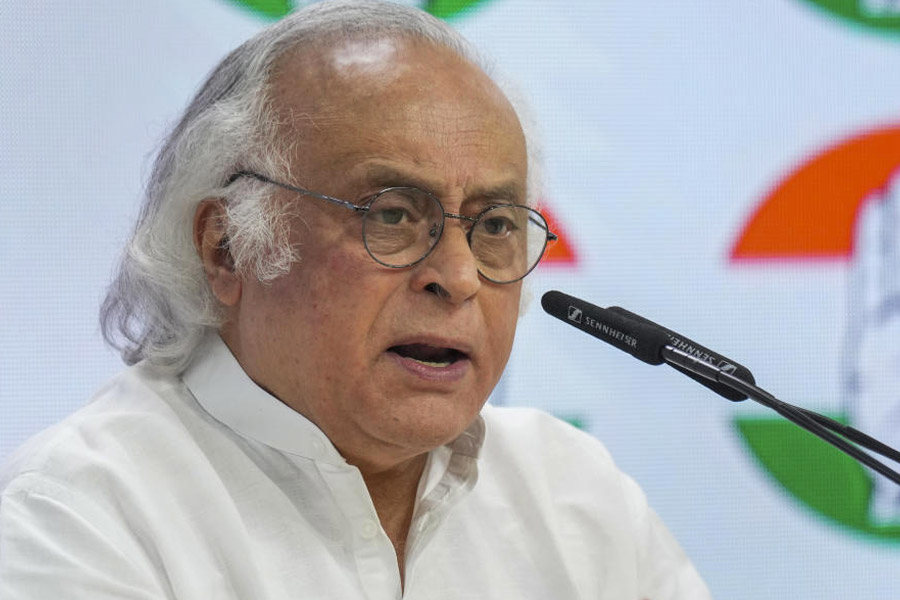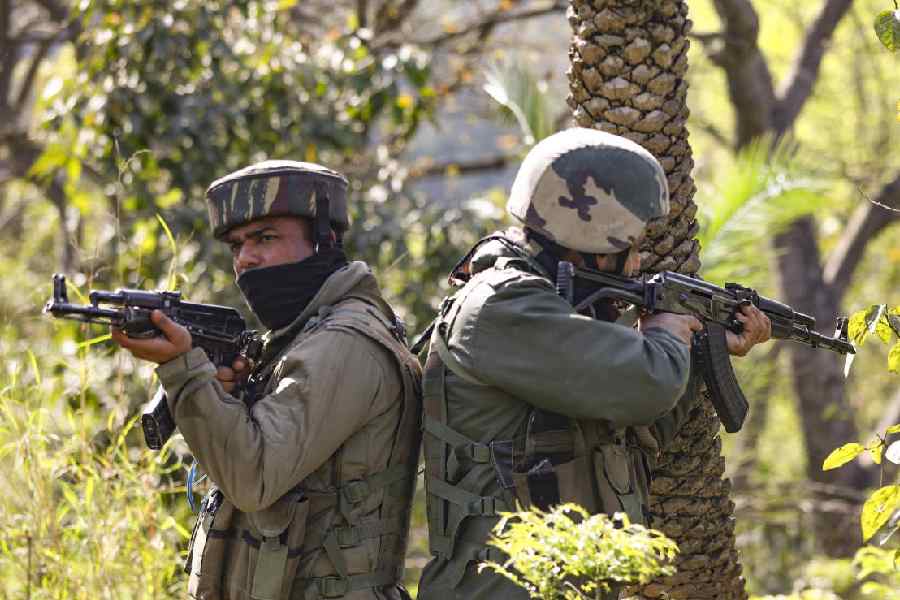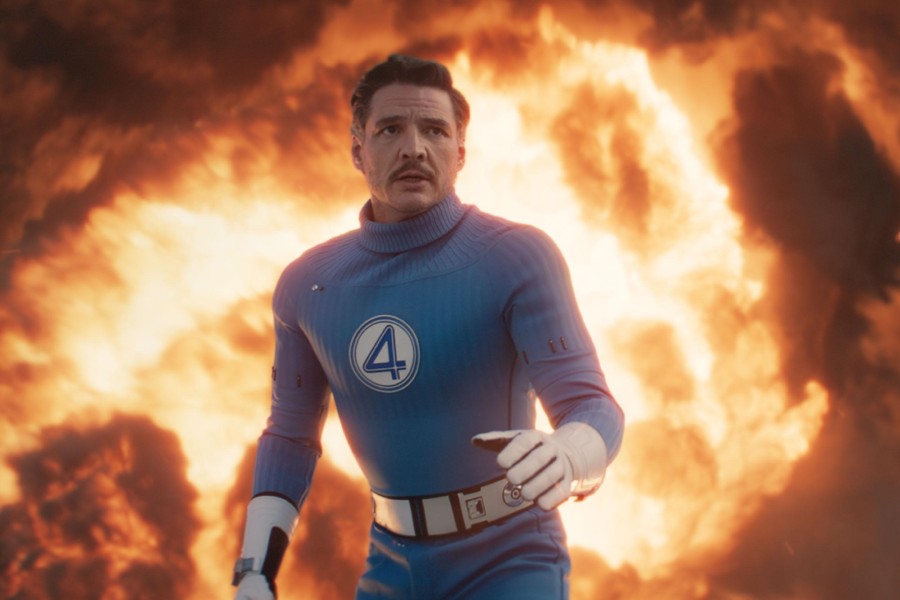
Naval Air Station INS Hansa, Goa, May 10: "The birds outside were flying faster. Inside the cockpit it was noisy. I was sitting on an engine that was thundering away under me. The plane was in the air. But we were not moving."
Arun Prakash had just described what "hover" means.
It is the power of slow - or no - speed, while holding one's own. The admiral was the first to fly the Sea Harrier plane to India, along with Commodore Sanjoy Gupta and a Briton, Taylor Scott, in 1983.
Tomorrow, the fascinating Sea Harrier, that lifts and lands like a helicopter but is a jet plane, the last of its kind in the world, is being put out of service by the Indian Navy.
Today, the admiral, who retired as the chief of naval staff in 2006, lives in a house on a hill with a rich library for his study. The house overlooks a seashore outside his favourite INS Hansa in Goa.
Commodore Sanjay Gupta, who also retired in 2006, but was retained for two years to supervise an upgrade programme for the planes, tends to his dogs, plays squash and frustrates about life in New Delhi where a former service chief has just been suspected in Parliament of accepting "loose change" ( chillar) as bribe.
In 1987, a Harrier was seen by an American plane flying over England and dunking into the Atlantic. The single-seat plane had no one in the cockpit. Its canopy was missing. The body of the Briton, Taylor Scott, was found on the plateau of Salisbury Plain in South West England the next day. Scott was thought to have been whisked away from the plane he was flying. What took away the chief test pilot for BaE Systems from the plane in mid-flight is still a mystery.
Thirty-three years since Prakash, Gupta and Scott landed after a 5,400-mile journey from RAF Yeovilton in Somerset, England, in INS Hansa, Goa, the Sea Harriers of the "White Tigers", Indian Naval Air Squadron 300, will head to the museum and the scrapyard tomorrow. The trio flew from England to Malta to Luxor in Egypt to Abu Dhabi before crossing the Arabian Sea. They flew only in daylight. It took them three days.
The Sea Harriers they flew were single-seaters (the twin-seat trainers were to follow). They were to embark the INS Vikrant, India's first aircraft carrier, and then the INS Viraat.
After tomorrow, the Viraat will be a carrier with no fixed-wing aircraft. It is due to be decommissioned later this year. With no government ready as yet to fund it as a museum, the carrier could go the way of its predecessor, the Vikrant, that was sold as scrap after years of uneconomic survival as a museum, and the aircraft that flew from it, to the scrapyard.
For the Indian Navy that means that it will be back to being a single-carrier fleet with the INS Vikramaditya. For the fleet air arm, tomorrow will mark the end of a technological culture called VTOL - vertical take-off and landing - and a way of life in which aviators could see birds fly faster.
In the passing of the Sea Harrier, the navy marks a return after more than three decades to a technological culture described in the acronym STOBAR - short take-off but arrested recovery. That is the technology that the INS Vikrant had. For the fleet air arm, it is a swing from western technology to Russian platforms.
The White Tigers will now fly the MiG29K fighter jets, which will be the navy's only cutting teeth in combat.
The MiG 29K is supersonic, unlike the Sea Harrier that was subsonic (slower than the speed of sound). The MiG 29K is a generation ahead, has more computers on board, packs more weapons, flies from an angled ski-jump on the carrier and is stopped (arrested) by cable stung across the flight deck of a carrier. It is a much bigger plane. It necessitates a far bigger flight deck.
A bigger flight deck necessitates a larger carrier. A larger carrier needs greater power. Greater power needs more engines. More engines deliver more propulsion. All of it costs more money.
The fade-out of the Sea Harrier and the transition to the MiG 29K could mark the end of frugality in military matters, even if matters military are always expensive.
The Sea Harrier epitomised life in the 1980s. In the 1980s, when the Sea Harrier was bought and surveyed the Indian Ocean after being "launched" from a flat-top carrier, there were no LED television sets in living rooms and bedrooms, no mobile phones; indeed, there was no Internet.
Life was itself at slow speed. And the Sea Harrier was capable of no speed at all. "Hover" - read Prakash's description above again - meant that it could stand still in mid-air. And it could land on your front porch. It was all the more challenging for that.
"She's a bitch of an aircraft," says Rear Admiral Devender M. Sudan, now senior directing staff at the National Defence College in New Delhi. "It demands that you (the pilot) has to be headalert at all times. You had the throttle, that you operate with your left hand, but next to it is the nozzle lever that you had to angle perfectly."
In simple terms, the powerful Pegasus engine built by Rolls Royce took in vast amounts of air during hover. The nozzles directed the exhaust from the engine vertically or straight behind. When vertical, the aircraft had to be aligned at a perfect 90 degrees from the flight deck, wind or no wind, in hot and cold weather, and it was actually standing on four pillars of gas that thrust some 30,000 pounds on the deck.
Depending on the angle of the nozzles, the aircraft would move forward and, even, backward. She could be still, she could pirouette, move forward, yaw (turn on its own axis) and speed away. She could launch like a rocket and land like a softball, all depending on the "headalert" pilot.
The Sea Harrier looks like planes do not do these days. In addition to its undercarriage, she has "outriggers" - wheels that hung down from its wingtips to land and take-off and that would align with the body in flight.
Shekhar Sinha, who trained with Prakash in England and was the White Tigers' first qualified flying instructor (QFI), used slow-speed once to "intercept" an American Super Hornet F/A-18. Sinha took premature retirement in 2014 as the Flag-Officer-Commanding-In-Chief, Western Naval Command, after he was superseded by Admiral Robin Dhowan, the current chief of naval staff. Dhowan himself was appointed to the post after Admiral D.K. Joshi quit prematurely.
The Viraat was in the North Arabian Sea in 1989 with the White Tigers squadron embarked one afternoon. Sinha had just returned from a sortie. He was still in his flight suit when the flight commander, the late Lieutenant Commander R.K. Singh, barked into the speakers: "Tiger leader, Tiger leader, scramble."
The North Arabian Sea is not far from the Pakistan coast. The crew was on alert. Sinha raced to his plane. On the R/T (radio transmitter) the fly-co told him they had a speck on the radar. Sinha scouted around some 80 miles and then told the ship he might lose contact because he was flying down to 1,000ft.
The fly-co asked "any tally?", meaning had he got visual confirmation of a target. Sinha replied no, but just then looking up through the canopy he saw the speck much higher and went after it full speed - full speed in the Sea Harrier is .96 mach, 1 mach being the speed at which sound travels. He used stealth, came up from lower down and behind his quarry before levelling with him.
"I was at his tail," recalls Sinha. But how could a subsonic Sea Harrier be after the supersonic Super Hornet?
"You fly supersonic in bursts, not always," he explains. Speed consumes greater energy and must be used tactically. Speed when you should flee or when you want to catch up.
"So I came alongside him," Sinha continues with his story. "And the pilot couldn't believe what he was seeing on his wingtip; he dashed a hand against his forehead as I switched on to the MayDay frequency temporarily and read off all the markings on his plane," Sinha grins.
No one was going to open fire, of course, but fighter pilots know when they've been had.
"I reported to ship 'Fox two' (within missile firing range) and I asked the American: 'which ship, where bound?'. By then fellow Tigers were closing-in from the Viraat. I'd been told that senior pilot Lt Commander E.G. Shankar was in the vicinity. The fellow replied 'thanks, mate'. I pulled away because I was running low on fuel and had to return. The boys saw him till be landed on the USS Enterprise," narrates Sinha.
In the national capital region last month, Sinha led a sustained campaign that forced cricketer Mahendra Singh Dhoni to cancel his contract to model for a well-known builder. The builder had failed to keep his promise and deliver apartments to mostly middle-class buyers in time and with the quality they expected. The billionaire builder did not know what hit him till Dhoni, trolled repeatedly by Sinha and the flat-buyers on Twitter, thought he had had enough. The consumer rights activists came up from low-and-slow.
For all the exploits in the Sea Harrier, it still remained the demanding "bitch" for the Indian Navy pilots. This was more so after sanctions imposed following the 1998 nuclear tests.
The US Marine Corps, which flew a version of the Harrier - not the Sea Harrier - that also has the capability for vertical take-off and landing, has lost more aircraft than the Indian Navy. But the Indians lost more than half their fleet - 18 out of 28, according to official figures - to accidents. The British, who used the Sea Harrier to great effect in the 1982 Falklands War with Argentina - just at the time the first Indian pilots were in training - had a better record.
The first fatality in India was actually an Indian Air Force - not an Indian Navy - officer who was on deputation with the White Tigers. In 1988, Squadron Leader Vinod Mehta - Vinu to his colleagues - a former pilot of IAF deep-penetration strike aircraft Jaguars, was on his third sortie in a single day when his Sea Harrier dropped from around 80ft when it came in for a vertical landing. In the armed forces, colleagues do not point out the errors made by soldiers after they result in fatalities.
Indian conditions, with temperatures much higher than in England, made the Sea Harrier more difficult to fly here than in wintry climes. The rise in temperature meant that there was less oxygen intake and, therefore, less thrust. Pilots had to jettison fuel and weapons to be of the right weight for landing vertically.
That's what Sudan meant by staying "headalert".
"And we had to make all the calculations before take-off," says Sunil Damle.
Damle was among the first officers along with Prakash and Sinha and Gupta to train in England. He also later commanded the squadron. He retired as Vice Admiral and Flag-Officer-Commanding-in-Chief, Southern Naval Command.
He says he has the unique experience of witnessing the first fatality, the first ejection and the first belly-landing of the Sea Harrier in India. The ejection was his own - near Kalpakkam on India's south-east coast - and of a trainee. The belly-landing was his too, on the Viraat, when the undercarriage wouldn't open and he went down vertically.
"That was during an army cooperation exercise," he recalls of the ejection. "The trainee was behind me. The engine shuddered and he ejected. The army officer who was liaising on the ground reported my plane was on fire. I tried to re-light but it wouldn't and I ejected. A Tamil Nadu policeman picked me up off the beach in his two-wheeler and took me to the village where my trainee was. His hand was broken and he was dazed but otherwise safe."
In the 33 years that India has flown the Sea Harrier, less than 60 pilots have made the grade, so demanding has the "flying bitch" been. Come tomorrow, the pleasures of slow, or no-speed, will pass into history.
The birds will not fly faster any more.










